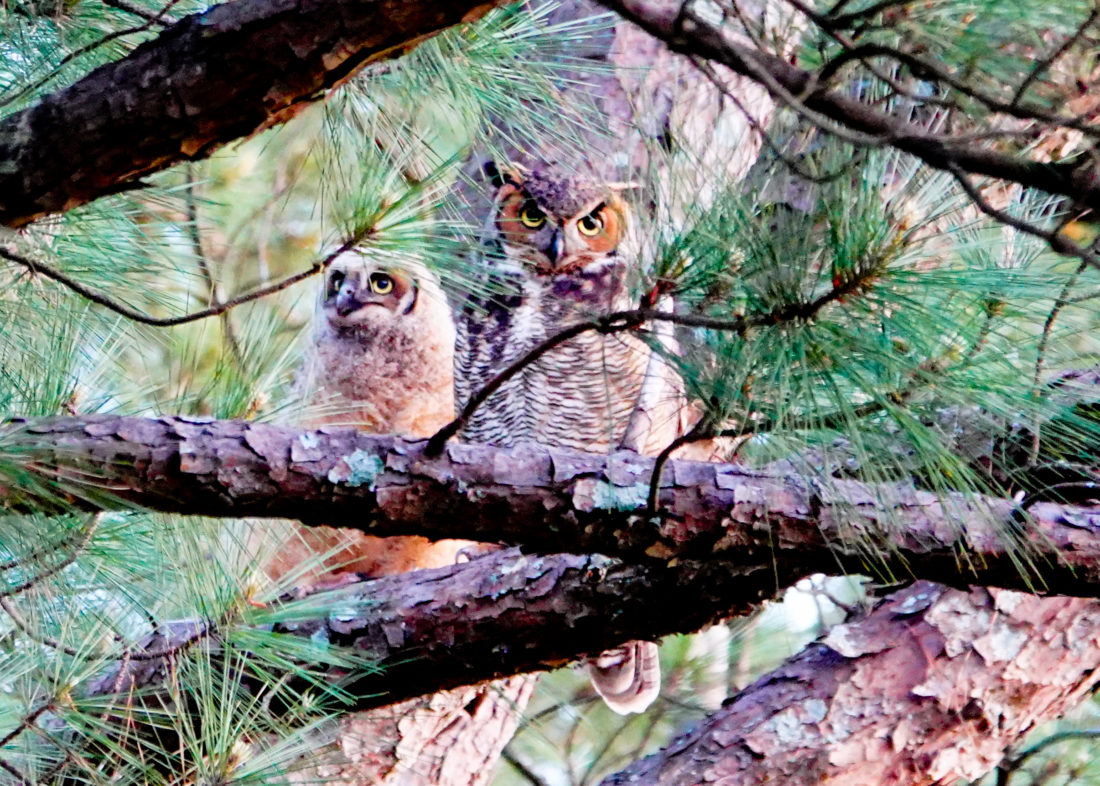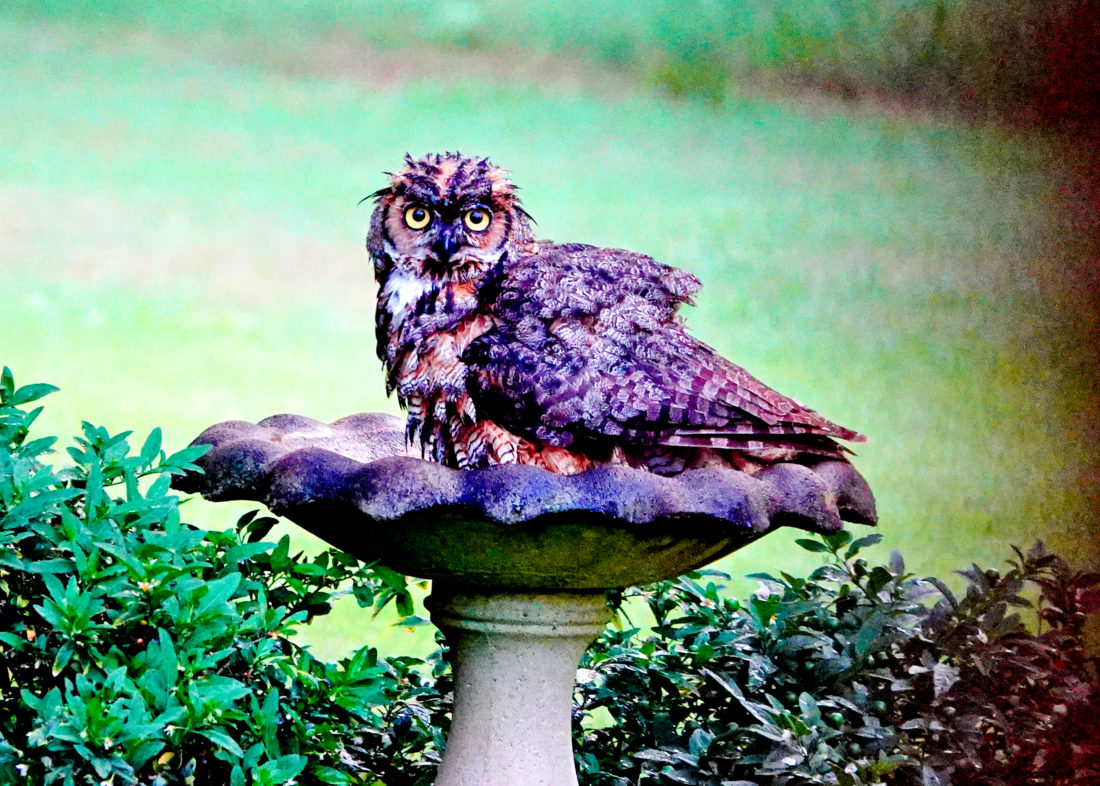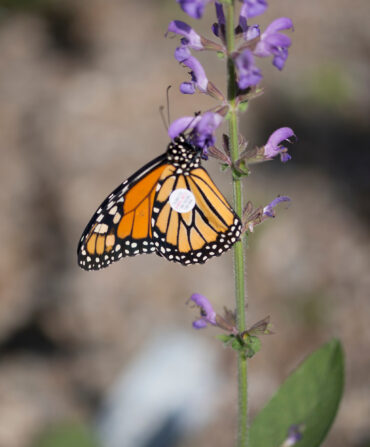“I just casually glanced out the window, and there was this owl sitting in the birdbath,” Dr. Juan Brown says. “So I just went screaming around the house to get my camera.” Brown, an 83-year-old retired physician in Anderson, South Carolina, took up photography about a decade ago. Great horned owls frequently star in his photos, as they’ve nested in a tree outside his garage three out of the last five years. “But this owl in the birdbath—I call him Crazy Bird—was an absolute first,” he says. “I couldn’t believe it, and I told my wife and she couldn’t believe it either.”
Jim Elliott, the executive director of the Avian Conservation Center in Awendaw, South Carolina, says it is indeed rare to see a great horned owl taking a bath. Though owls, like all birds, do bathe to maintain their feathers, great horned owls are more strictly nocturnal than other owl species and have less affinity for water. “This would be pretty neat to see,” he says.
As for the unusual behavior, Elliott chalks it up to youth. “Like any young, naïve creature, a young bird might do something, like bathing in the middle of the day, that an older bird would not do,” he says. “This bird just hasn’t read the owl manual yet.”
Since the young owl’s first foray into the bath back in June, Brown has caught it in the midst of a luxurious soak four times. “He’ll stay about ten or fifteen minutes, and sometimes he gets down walking along in the grass.” Brown has captured a whole series of photographs of the baths—complete with titles.
“Bathing Beauty”
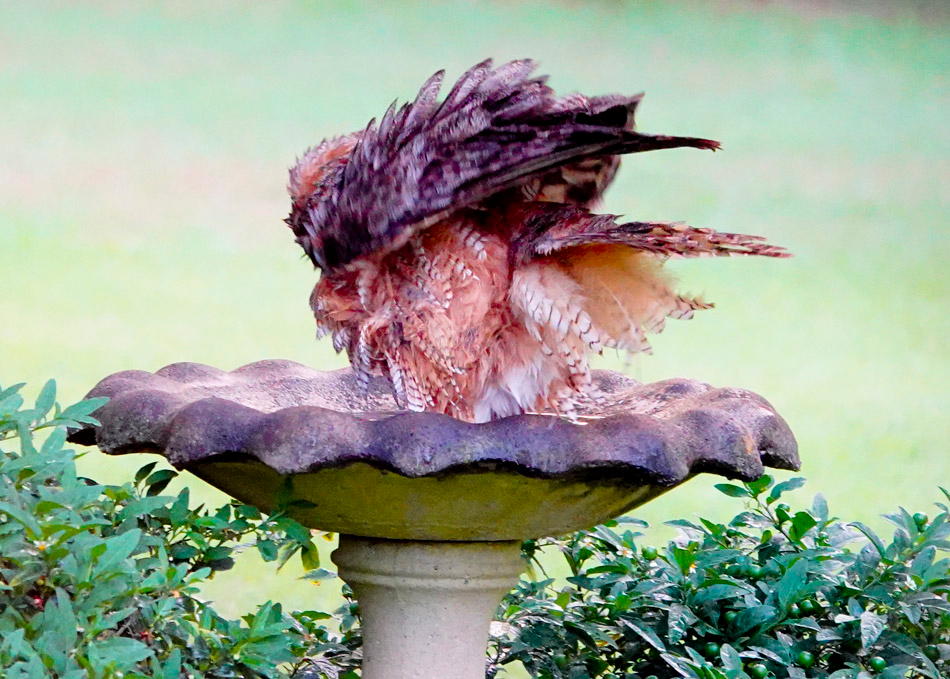
“Shake That Thing”
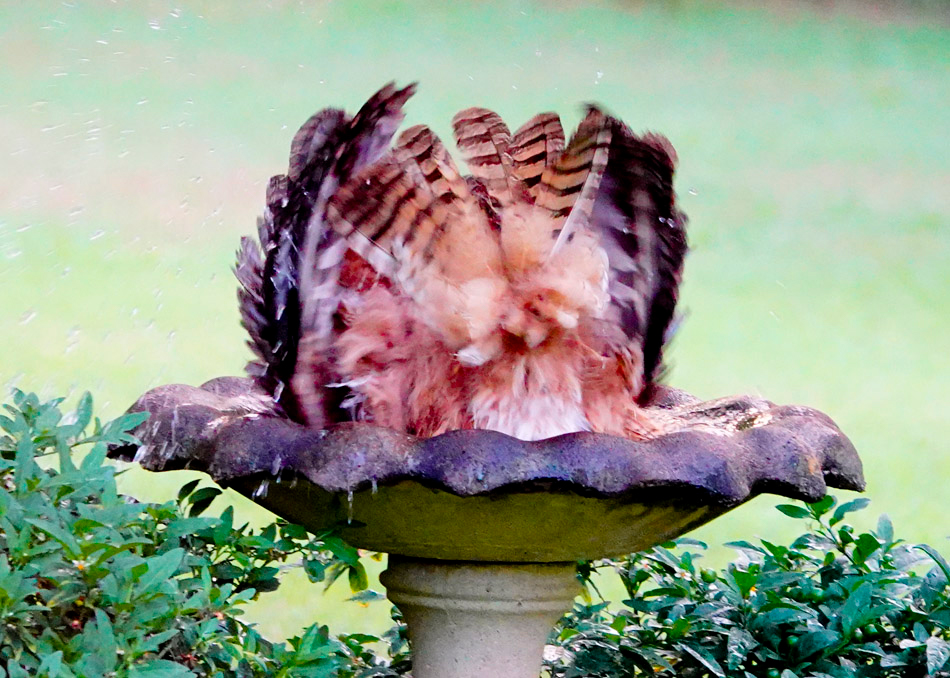
“Mighty Great Horned Owl Attacked by Honeybee”
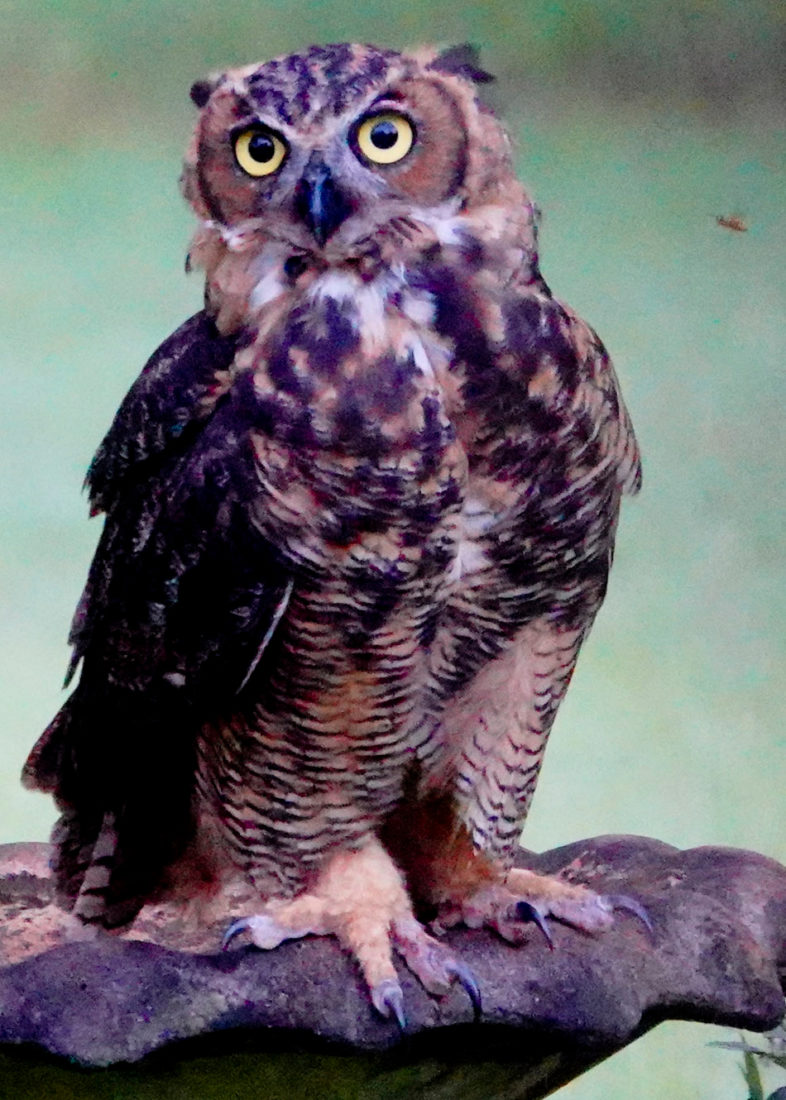
“After the Bath”
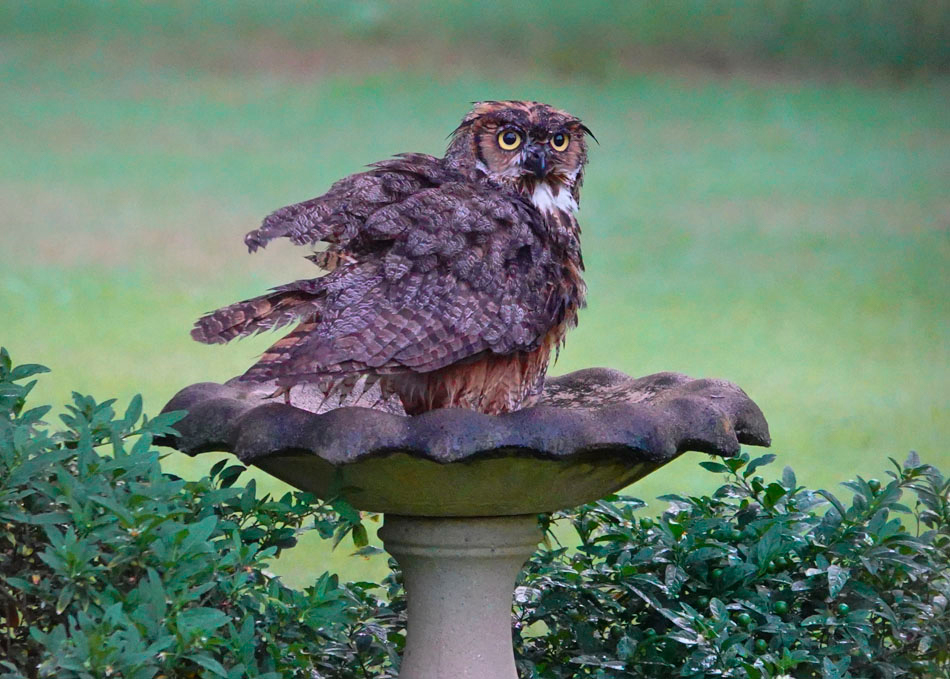
“March of the Great Horned Owl”
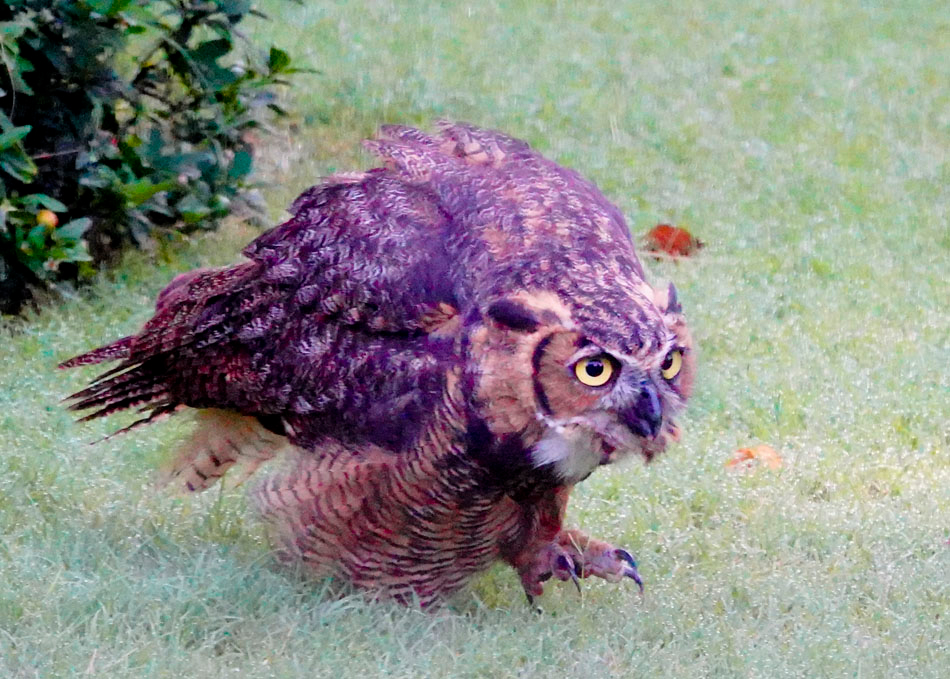
“Sometimes after they fledge, I don’t see them as much anymore, but this owl has just been hanging around the house,” Brown says. Great horned owls, explains Elliott, are nonmigratory, live in territories, and young owls might remain with their parents for as long as six months.
“Several times the baby was sitting in the birdbath,” Brown recalls, “and one of the parents dive bombed it, and they took off together.” But despite what may be attempts at chastening from its parents, the young bird apparently has a bit of a rebellious streak, much to Brown’s enjoyment.
“I try to get as close as I can to get the photos,” he says. “I sneak around from tree to tree like a fool…but I sure have a lot of fun.”
